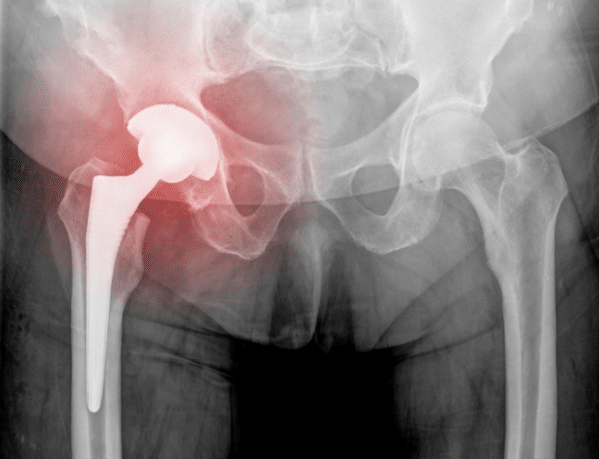Hip replacement surgery helps patients with bone and hip conditions to eradicate pain and increase mobility. The procedure replaces a damaged hip joint with an artificial joint made of metal alloy, plastic, or ceramic material, but when trying to answer the question; how do you know when you need a hip replacement can be a tricky question to answer.

In the past, hip replacement surgery is reserved for patients over 60 years of age, due to the thinking that the elderly are less active, and are therefore less likely to put stress on an artificial joint. Today, new technology has improved the quality of the artificial parts, making them more durable and more suitable for patients with a wider age range.
Recent studies also showed that patients who choose to undergo hip replacement surgery before advanced deterioration occurs tend to have better results, and can recover more easily. Thus, regardless of age, hip replacements are offered to people who experience chronic and severe hip pain and inflammation that result in reduced mobility and joint function.

Femoral broach hip replacement
The image above shows a fully porous-coated femoral component utilized in revision hip surgeries. The fully porous coating ensures a biological bone ongrowth and a solid fixation. With the advancement of surgical techniques and implants, primary hip replacements usually last for 20 years or more.
How do you know when you need a hip replacement?
When pain management or osteotomy, a procedure that involves bone cutting and realignment to shift the weight from the affected area to the healthier one, no longer works.
Consider total hip replacement surgery, especially if the extreme pain caused by hip joint damage interferes with day-to-day activities, and if the pain is present even when resting. The most common conditions that may warrant a hip replacement procedure include:
- Osteoarthritis
- Rheumatoid arthritis
- Septic arthritis
- Osteonecrosis
- Bone tumors
- Ankylosing spondylitis
- Fracture of the hips
- Bone Dysplasias
These medical conditions wear and damage the hips, resulting in stiffness and swelling, and lead to debilitating pain and a significant decrease in joint function, especially in chronic cases. Due to these effects, sufferers find it difficult to sleep, move, do daily tasks, work, enjoy their hobbies, or even have a normal social life.
By replacing the worn or damaged hip joint with an artificial one, walking and doing activities that require the movement of your hip joint will be easier.
In sum, the benefits of undergoing hip replacement include:
- Relief from pain
- Improved mobility
- Better quality of life
How Standard vs. Minimally Invasive Hip Replacement Techniques Differ
There are two techniques used in hip replacement: the traditional procedure (which branches out into lateral and posterior techniques), and the minimally-invasive method. The primary differences are the size and the location of the incision made by the surgeon.
General anesthesia is administered to put you in deep sleep, relax the muscles, and prevent you from feeling any pain during the surgery. Spinal anesthetic, or an epidural, may also be used, in which only the lower part of your body will be numbed.
In standard procedures, the surgeon will then make an incision along the side (lateral) or from the back (posterior) of the damaged hip and move the connecting muscles. This effectively exposes the hip joint, so the doctor can saw the thigh bone and remove the ball portion of the hip joint. Then, the surgeon will replace it with an artificial joint by attaching the material using cement or other materials. Overall, the entire procedure will take around 60 to 90 minutes.
On the other hand, in a minimally invasive procedure, anterior hip replacement is performed. This means accessing the damaged hip from the front, rather than the side or the back, to spare the major muscles from cutting. This technique minimizes soft tissue trauma, which makes recovery quicker and less stressful compared to the traditional method. The surgical time is also reduced.
What to Expect After a Hip Replacement Procedure
Depending on the technique used during the procedure, you will be staying at the hospital for a duration of four to six days after the surgery. You will be staying in bed with a cushion placed between your legs to keep your new hip joint stable. For easier bathroom breaks, a drainage tube may be used.
Physical therapy typically starts on the day after the hip replacement procedure and continues for several weeks or months. Expect to be walking with the assistance of crutches, a walker, or a cane within days. You will need to avoid pivoting the involved leg for a period of six to 12 months.
There are also certain sports and strenuous activities that you should refrain from doing. A minimally invasive procedure, however, may allow you to enjoy some of them. Your therapist will teach you techniques so you can perform daily activities without dislocating your newly replaced hip joint.
Finding the Right Specialist
Hip replacement surgery is a major procedure, thus, it is important that you find a specialist you can trust.
Choose someone who regularly performs the procedure with a high success rate so you can make an informed decision. This also applies if you need revision hip replacement or second hip replacement surgery, because this procedure is even trickier to perform.
In preparation for your upcoming hip replacement surgery, know what you need to know about the details of the procedure; go as far as watching videos aside from reading written information. You should also stay fit and active; strong muscles will greatly help in recovery.
At New York Hip Knee, we provide anterior hip replacement services to relieve you of the pain of hip damage. For more information about our services, contact Dr. Karkare today.
Our minimally invasive technique offers minimal tissue damage, less post-operational pain, earlier recovery and faster healing, shorter procedure time and hospital stay.
Hip replacement surgery helps patients with bone and hip conditions to eradicate pain and increase mobility. The procedure replaces a damaged hip joint with an artificial joint made of metal alloy, plastic, or ceramic material, but when trying to answer the question; how do you know when you need a hip replacement can be a tricky question to answer.

In the past, hip replacement surgery is reserved for patients over 60 years of age, due to the thinking that the elderly are less active, and are therefore less likely to put stress on an artificial joint. Today, new technology has improved the quality of the artificial parts, making them more durable and more suitable for patients with a wider age range.
Recent studies also showed that patients who choose to undergo hip replacement surgery before advanced deterioration occurs tend to have better results, and can recover more easily. Thus, regardless of age, hip replacements are offered to people who experience chronic and severe hip pain and inflammation that result in reduced mobility and joint function.

Femoral Stem
The image above shows a fully porous-coated femoral component utilized in revision hip surgeries. The fully porous coating ensures a biological bone ongrowth and a solid fixation. With the advancement of surgical techniques and implants, primary hip replacements usually last for 20 years or more.
How do you know when you need a hip replacement?
When pain management or osteotomy, a procedure that involves bone cutting and realignment to shift the weight from the affected area to the healthier one, no longer works.
Consider total hip replacement surgery, especially if the extreme pain caused by hip joint damage interferes with day-to-day activities, and if the pain is present even when resting. The most common conditions that may warrant a hip replacement procedure include:
- Osteoarthritis
- Rheumatoid arthritis
- Septic arthritis
- Osteonecrosis
- Bone tumors
- Ankylosing spondylitis
- Fracture of the hips
- Bone Dysplasias
These medical conditions wear and damage the hips, resulting in stiffness and swelling, and lead to debilitating pain and a significant decrease in joint function, especially in chronic cases. Due to these effects, sufferers find it difficult to sleep, move, do daily tasks, work, enjoy their hobbies, or even have a normal social life.
By replacing the worn or damaged hip joint with an artificial one, walking and doing activities that require the movement of your hip joint will be easier.
In sum, the benefits of undergoing hip replacement include:
- Relief from pain
- Improved mobility
- Better quality of life
How Standard vs. Minimally Invasive Hip Replacement Techniques Differ
There are two techniques used in hip replacement: the traditional procedure (which branches out into lateral and posterior techniques), and the minimally-invasive method. The primary differences are the size and the location of the incision made by the surgeon.
General anesthesia is administered to put you in deep sleep, relax the muscles, and prevent you from feeling any pain during the surgery. Spinal anesthetic, or an epidural, may also be used, in which only the lower part of your body will be numbed.
In standard procedures, the surgeon will then make an incision along the side (lateral) or from the back (posterior) of the damaged hip and move the connecting muscles. This effectively exposes the hip joint, so the doctor can saw the thigh bone and remove the ball portion of the hip joint. Then, the surgeon will replace it with an artificial joint by attaching the material using cement or other materials. Overall, the entire procedure will take around 60 to 90 minutes.
On the other hand, in a minimally invasive procedure, anterior hip replacement is performed. This means accessing the damaged hip from the front, rather than the side or the back, to spare the major muscles from cutting. This technique minimizes soft tissue trauma, which makes recovery quicker and less stressful compared to the traditional method. The surgical time is also reduced.
What to Expect After a Hip Replacement Procedure
Depending on the technique used during the procedure, you will be staying at the hospital for a duration of four to six days after the surgery. You will be staying in bed with a cushion placed between your legs to keep your new hip joint stable. For easier bathroom breaks, a drainage tube may be used.
Physical therapy typically starts on the day after the hip replacement procedure and continues for several weeks or months. Expect to be walking with the assistance of crutches, a walker, or a cane within days. You will need to avoid pivoting the involved leg for a period of six to 12 months.
There are also certain sports and strenuous activities that you should refrain from doing. A minimally invasive procedure, however, may allow you to enjoy some of them. Your therapist will teach you techniques so you can perform daily activities without dislocating your newly replaced hip joint.
Finding the Right Specialist
Hip replacement surgery is a major procedure, thus, it is important that you find a specialist you can trust.
Choose someone who regularly performs the procedure with a high success rate so you can make an informed decision. This also applies if you need revision hip replacement or second hip replacement surgery, because this procedure is even trickier to perform.
In preparation for your upcoming hip replacement surgery, know what you need to know about the details of the procedure; go as far as watching videos aside from reading written information. You should also stay fit and active; strong muscles will greatly help in recovery.
At New York Hip Knee, we provide anterior hip replacement services to relieve you of the pain of hip damage. For more information about our services, contact Dr. Karkare today.
Our minimally invasive technique offers minimal tissue damage, less post-operational pain, earlier recovery and faster healing, shorter procedure time and hospital stay.





